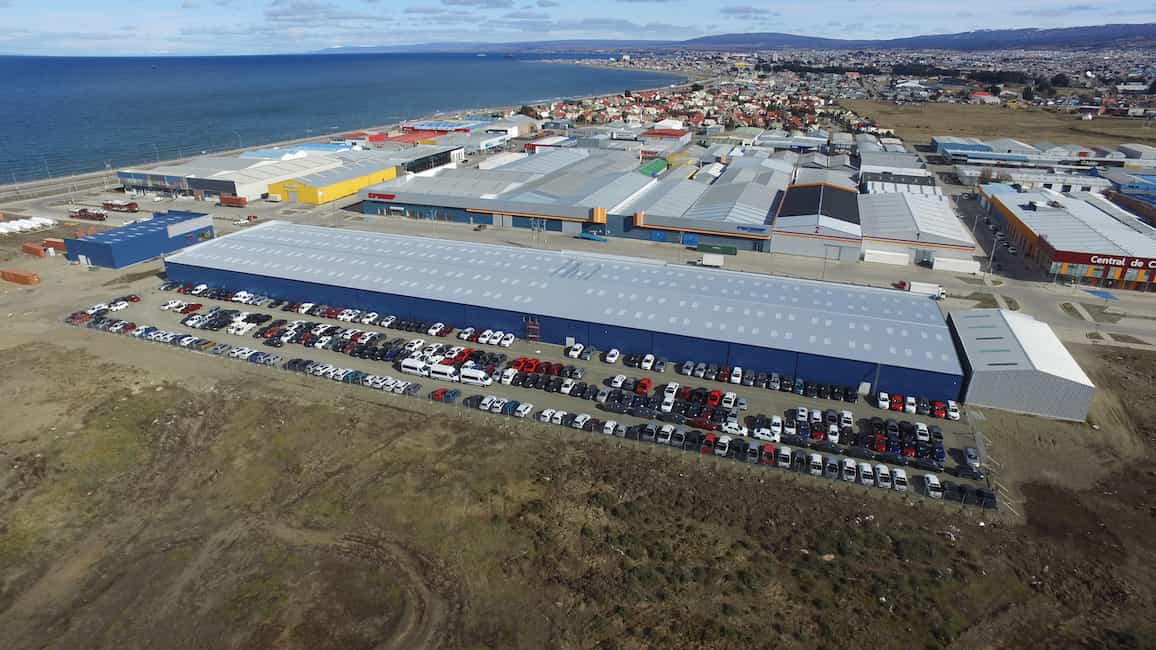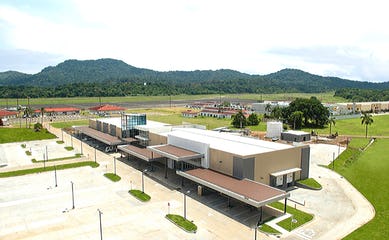Steel Building Procurement. Design-build construction strategy is taking over the commercial world and for a good reason. With increased flexibility in design construction, design-build projects have significantly reduced the hassle of reaching out to and hiring multiple contractors.
While the building services are offered by a single entity, the construction company isn’t required to have an in-house team for the execution of the entire project. They can subcontract the task to other construction companies if they lack the appropriate equipment or the workforce for a particular task.
In addition to providing design-build services, construction companies also offer ‘turnkey solutions’ to their industrial clients—apart from designing and construction, the company also makes sure that the processing plant is ready is functioning and ready for operation.
Design-build construction, on the other hand, refers to a project where a single entity is responsible for the designing and construction of a building. This may include a single company providing all the services as a result of a joint venture to turn the idea of an industrial building to reality.
A Sneak Peek into the Design-Build Market
The fact that industrialists can get access to a comprehensive range of design solutions at a single source makes design-builds the first choice of every commercialist. Design-build projects gained revenues of approximately $274 billion last year and are expected to grow by 18% between 2018 and 2021.
A comprehensive warranty is another reason that makes design-build projects a comparatively better choice for building owners. While the designer doesn’t offer a warranty on their designs, a design-build contractor backs up all their work with warranties and develops the design while keeping the building codes in mind—a factor that many designers often overlook.
The traditional building construction involves the management of two separate contracts. A design-build project, provides all services under one umbrella. Working together from the beginning to the end, the designer and contractor provide a unified budget and project schedule and communicate with each other throughout the project to make sure they’re on the same page. When a problem arises, they work together as a team to resolve the issue.
Phases Involved in Design-Build Construction
Industrialists are now turning to design-build construction strategy due to the aforementioned reasons. Design-build construction offers single-point responsibility.
An industrial-design build project involves three phases:
Process Design
During this process, the design-build contractor conducts a detailed session with industrialists, developing a thorough understanding of their work and specifications regarding their facility. Once the designer has a clear idea of the project, they start working on the initial design.
Developing a design for a commercial facility requires the designer to follow the building codes in order to ensure the safety of employees and protect their clients against penalties and legal complications.
Procurement
After the design confirmation, procurement is the next step. This is a time-intensive task as it involves the delivery of equipment and materials with long lead times, such as your steel building—a reason why the order must be placed as soon as possible.
The procurement process involves the collection of the desired materials and workforce for design execution. Since the design is created by the same contracting entity, they’re well aware of the complexities that may arrive during the construction phase.
Construction
The construction phase is the final step involved in a design-build contract. If it’s a turnkey contract, the construction process also involves the start-up phase where the contractor sets up the equipment in the facility, making sure it’s in running condition before handing over the keys to the owner.

Aspects to Consider Before Signing a Design-Build Contract
Although it’s important to pay attention to every detail before signing a design-build contract, two issues in particular play a significant role in determining the philosophy of your contract. As a commercialist or an industrial owner, paying attention to these aspects is critical as it decides how well your project goes.
Process Responsibility
Determining the responsibility for the project is the most critical factor to ensure the successful execution of a design-build project. There are situations when the project is so specialized that the owner holds more expertise than the designer does. In such a case, the owner takes responsibility to plan the process flow and start-up to ensure infallible execution of the design.
However, if the designer holds more expertise in the field than the owner, they can step forward and take responsibility for project completion and start-up. This approach is often considered during turnkey contracts, where the contractor takes responsibility for not only the construction of the facility but also for equipment testing and start-up.
In addition to that, some turnkey contracts include an additional clause where the design-builder is required to train the owner’s team on how to operate the installed equipment. Once the facility gets up and running, the design-builder can be contacted for consulting and maintenance services.
The third possibility includes the sharing of responsibility. The owner may provide the theoretical description of the process and the designer can implement this knowledge to design equipment capable of meeting the process requirements.
So how does this share of responsibility affect your design process? The degree of responsibility held by a design-builder affects their overall involvement in the project.
Financial Arrangements
A significant factor in design-build contracts, financial arrangements decide the method of payment for the project. Two of the most commonly used methods include the “lump-sum” and the “cost-plus” methods. However, instead of talking about how these methods work, we’re more interested in the effect these methods have on the project.
For design-builders, it’s often impossible to provide an exact estimate of the amount of money consumed in the project. Since the agreement is developed prior to the commencement of the project, the lump-sum estimate is based on pure guesswork, and a premature stipulation of the maximum price can cause the builder to compromise on quality, in order to stay within the initial budget.
To resolve this issue, a hybrid approach is adopted that provides the owners with the pros and cons of both methods. As soon as the cost exceeds the guaranteed maximum price that was initially declared, the project takes the form of a lump-sum project. The payments will then be made upon the completion of the specified project percentage and the owner can withhold or deduct money if the deliverables aren’t achieved within the decided timeframe.
Important Provisions of a Design-Build Contract
A comprehensive design-build contract conveys the project objectives in such a way that it leaves no room for errors. A common method for developing the plan requires the owner’s technical team to prepare a list of technical specifications for the project. This should be a detailed plan including all the essential factors; from the placement of equipment to the weight-bearing capacity of floors, the plan includes a compiled list of all these factors and their desired specifications.
Although there’s no concrete method for developing a design-build contract, there are several project considerations that should be a part of every design-build project.
Performance and Design Criteria
The owner provides a detailed description of the building’s performance criteria before the commencement of the design-build project. This comprises the operational durations, the life cycle costing, and the appearance of the building.
In case of a turnkey contract, the performance criterion also includes the necessary tests that should be conducted before declaring the facility as mechanically complete. Since all equipment requires a specific timeframe before reaching its optimum performance, owners don’t require a demonstration of the entire facility’s operational capacity. Instead, they require designers to conduct tests that ensure the facility is capable of achieving a specific percentage of its overall design capacity.
Periodic Reports
Depending on the process, these reports can be prepared in the form of charts and graphs or they can be a detailed summary of all the updates since the last reporting period. Most designers prepare these reports every month or at the end of a construction phase; they include information regarding the project status, current costs, expected completion date, and the achieved milestones.
A regular process of documented reporting works in favor of the owner and design-builder alike. With routine project updates, the owner can keep track of their project status and rectify any potential mistakes midway through the project, without exceeding their budget or the completion date.
For a design-builder on the other hand, these reports serve as documented proof of all that was done during the course of project completion. They can use these reports to back up their claims in case of future disagreements or if they’re ever held responsible for something that isn’t a part of their job description.
Quality Assurance and Control
Although these are critical considerations in a design-build project, they’re also the most difficult ones to draft since defining quality standards on the mere basis of descriptive language is next to impossible. Although the primary purpose of designing this draft is to set the quality standards for the building under construction, it also protects the design-builder in case an owner is paying for inferior-quality materials later complains about not using premium-quality materials.
For drafting a quality assurance document, the owner can quote standards like ASTM standards, ANSI, and several other nationally-published standards. To help the design-builder better understand the quality standards, the owner can refer to a particular building that they feel matches their building’s quality standards. Alternatively, there’s the option of hiring a third-party quality control inspector that can conduct the survey necessary to define a customized set of quality standards for the building.
Warranties
Most owners often confuse the callback warranty with the warranty of adequacy. The warranty of adequacy is the builder’s guarantee that all the materials and equipment used in a particular project are new and free from defect, that the workforce employed in the project have the skills desired and required for that project and that the completed design will achieve the intended purpose without hampering the operational capacity.
A callback warranty, on the other hand, is the builder’s agreement to rectify any defects of faults that may arise after the project’s completion. It’s important to note that the callback warranty is subject to a specified period and only the faults that occur within that timeframe are covered by the builder.
Unlike callback warranties, the warranty of adequacy stands independent of the time duration. If the owner experiences a latent defect in a product two years later, they can still file for the breach of warranty, provided that they succeed in proving the use of defective products during the construction.
In addition to these, turnkey design-build projects also include performance warranty. In order to understand this warranty, consider a turnkey design-build project for the construction of a gadget manufacturing facility. Upon the completion of the project, the design-builder will provide a warranty that’ll include the number of quality widgets that a plant can produce in a certain number of days.
For design-builders, it’s important to dispatch the warranty after testing the equipment as it’ll give them a clear estimate of the equipment’s capacity. For owners, it’s important to remember that their facility might take a while to reach its optimum performance capacity as mentioned in the warranty.
While drafting a warranty, design-builders often neglect the variables that aren’t in their control and can have a significant impact on the performance of equipment; these include raw materials and operating conditions of the machinery.
Conclusion
The use of the design-build construction method is rapidly taking over conventional building methods—and for a good reason. The use of design-build construction is substantially increasing and the industrialists are anticipating that it’ll soon become the only method available for project delivery.
With all the services offered by a single entity, design-build projects ensure easier management and effective communication. The owner doesn’t have to communicate the idea to several different entities before commencing the project. Instead, they can convey the idea to a design-builder, who can then allocate the necessary resources and labor for the process, thereby increasing the construction pace of the project.
Several factors should be kept in mind before developing a design-build contract, financial arrangements and project responsibility being some of the most important ones.
If the building owner is hiring a contractor that doesn’t have the expertise in a particular domain, they’re required to take responsibility for the project and assigning responsibilities to individuals. On the other hand, a skilled design-builder takes the entire responsibility of the project, ranging from design creation to its execution.
In addition to these aspects, performance criteria, periodic reports, quality control, and warranties are some other factors that require adequate attention, as they’re mutually beneficial for the builder and owner alike.
For an owner, this means keeping track of their project pace and making sure they’re not being overcharged for anything; for a design-builder, this means having documented proof of their services that can back their claim if they’re ever questioned on an element that wasn’t a part of the contract.
In order to make the most of your design-build project, it’s recommended to convey all your project specifications to your design builder.



